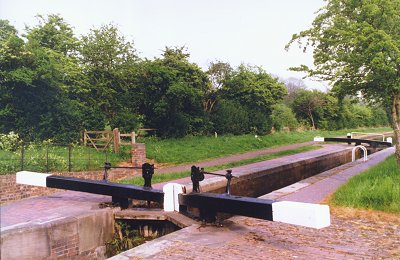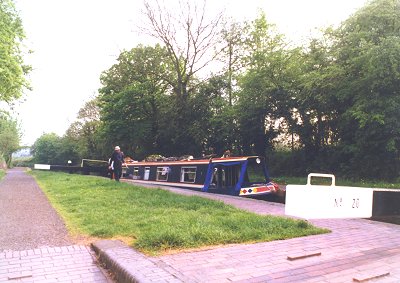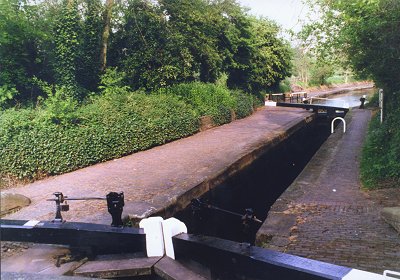|

Lock 9.
Listing: The listing for each of these locks reads: c.1770. By
Brindley, Whitworth and Simcock, engineers.
Comment: This flight of 21 locks carries the BCN off the high ridge on
which Wolverhampton and most of the Black Country stands. The upper part of the
flight was once lined by factories with many canal arms. The lower part was
always semi-rural. Now the whole flight is a surprisingly green and quiet
walkway, down a very early flight of locks, built by one of the great,
pioneering engineers and exhibiting wonderful brickwork in the locks and
bridges. These works provide excellent evidence for those who espouse the "form
follows function" view of design.
 |
Lock 19. |
|
Lock20.
|
 |
Listing: Lock 20: 1772, altered c.1785. Lock 21: 1785, added
to the main flight approximately 15 years after the main flight.
Original lock No.20 was found to be too deep. Lock No.20 was therefore
altered and Lock 21 added.
Comment: Alan Codling writes: "Like the Walsall flight, the
Wolverhampton 21 have one odd lock, No.20, which has a single bottom
gate. Originally there were only 20 locks in the flight, with the bottom
lock having a depth of 10 feet. This was so wasteful of water that the
Company proposed to build a reservoir to supply it, although there is no
sign of this. In 1784 the lock was rebuilt with half the depth and
another lock built above it. This was at the time John Smeaton was
engineer for the Broadwater Extension and the Birmingham and Fazeley, on
both of which he used single bottom gates. He was presumably also
involved in the work here and adopted the same design for the new lock -
the present No.20". Note that the listing gives Lock 20 as the original
and Lock 21 as the additional lock. Codling has it the other way round -
and with the evidence of the single gate to support him.

Lock 21.

|